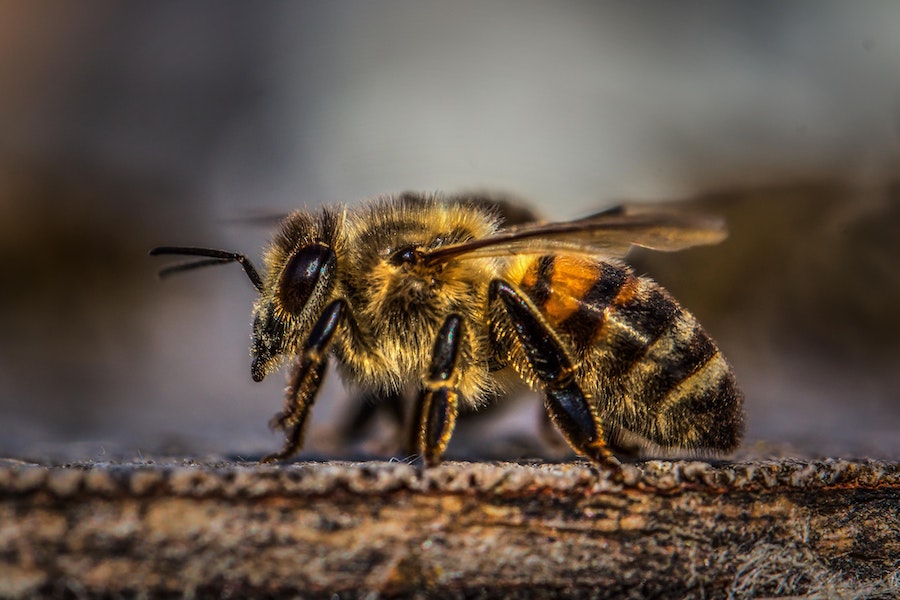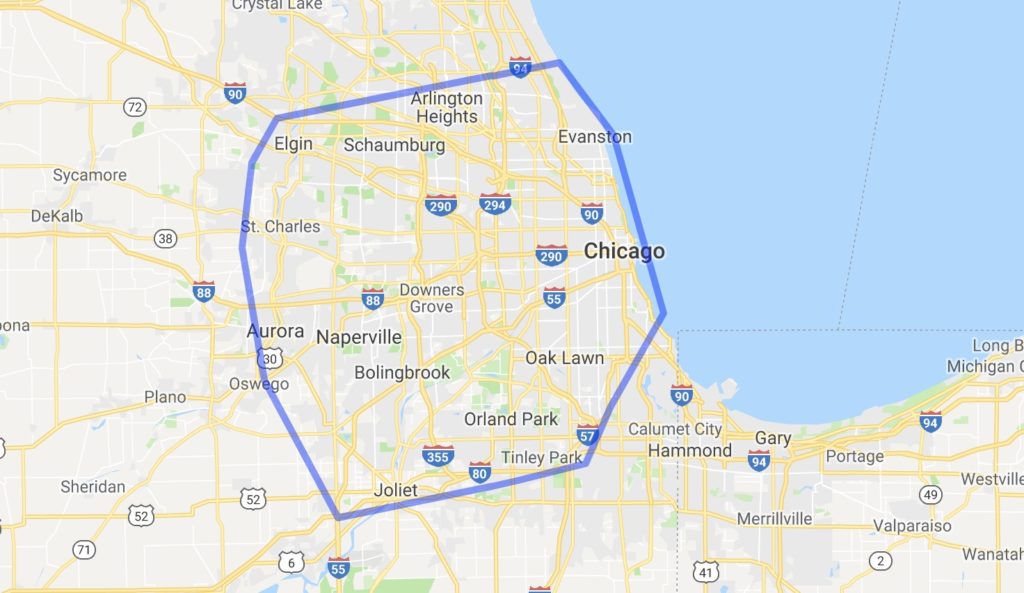Different types of bees require different treatments. Start with an inspection to determine which type of bee is present:
Carpenter bees:
Unlike bumblebees, these do not have yellow hairs on their abdomen. That’s one way to determine if you have carpenter bees. The other way is to see where they’re hanging out. Yes, they do eat pollen and nectar from flowers, but they also are attracted to wood around your home, such as eaves and soffits near your roofline, piles of wood around your home, fences, decks, sheds, and wood siding. They bore holes in the wood, causing damage. They make a buzzing noise which you may notice. While stinging is rare, it can happen and may cause a bad allergic reaction.
Bumblebees vs. Honey bees:
Quick comparison: Bumblebees are larger and rounder than honey bees. Bumblebees can sting more than once, and honey bees only sting once and then die. The bumblebee sting doesn’t leave a barbed stinger in the skin, and may not be as dangerous as the sting of a honey bee. Bumblebees are an endangered species and cannot be relocated. Honey bees can be relocated and should only be killed if they pose a real threat. Let’s look at each one:
Honey bees:
Yes, it’s true that honey bees sting and will probably cause a large welt where they get you. Some people are very allergic to the sting and need to take precautions. If you have an infestation of honey bees in your home, your first reaction may be to destroy them. But don’t! Honey bees are very important to the well-being of our planet and should be preserved because of it. The right thing to do is to call in an expert who can relocate them, saving the bees and letting them do their important work, including:
Honey Bees are super pollinators, meaning they travel from flower to flower, helping to fertilize many different types of fruits, vegetables, nuts and flowers. We are dependent on the work of honey bees for a large portion of our food supply.
Honey bees produce honey, of course, and beeswax, too, which is used in hair and makeup products, candles and other products.
A quick look at the numbers:
The University of Minnesota Twin Cities says, “Honey bees are the most economically valuable pollinator worldwide, and many high-value crops such as almonds and broccoli are entirely reliant upon pollination services by commercial beekeepers. Globally, 9.5% of the total economic value of agricultural production for human consumption comes from insect pollination – in 2005, this amounted to just under $200 billion.”
Bumblebees :
Bumblebees are even better pollinators than honey bees. They are more resistant to weather changes, and because there are more varieties of them, they pollinate a wider variety of flowers, fruits and vegetables than honey bees. Bumblebee populations are in severe decline, threatening the food supply of the planet. They should be left alone when found on your property. They don’t cause structural damage, unlike carpenter bees. They don’t produce large amounts of honey to damage your home, unlike honey bees.
Sweat bees:
Have you seen green bees with a metallic sheen in your yard that look as though they’re flying into the dirt? These are sweat bees. They like to set up house in a patch of dirt that doesn’t have any growth on it, such as between rows of vegetables, at the edges of flower beds, etc. As you might imagine, sweat bees are attracted to human sweat, and will sting if aggravated. The sting can cause an allergic reaction, so monitor it carefully if you are stung. Sweat bees live underground. They are important pollinators and should be allowed to do their job. To discourage them, cover up any areas of dirt in your garden with mulch or plant material.

